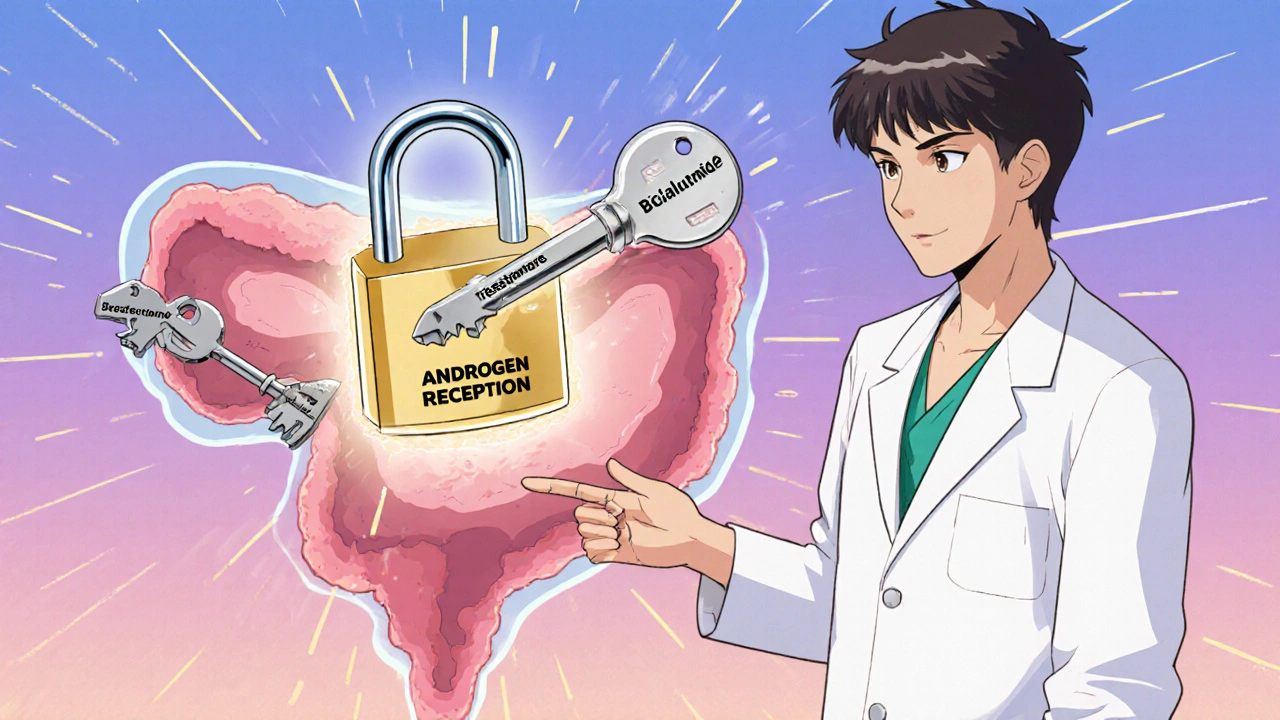When you hear bicalutamide, a non-steroidal anti-androgen drug used primarily to block testosterone’s effects in prostate cancer. It's also known as Casodex, and it’s one of the most common hormone therapies for advanced prostate cancer. Unlike chemo, it doesn’t kill cells—it stops cancer from feeding on male hormones. This makes it a targeted, long-term option for men whose cancer has spread or returned after surgery or radiation.
Prostate cancer often grows because testosterone and other androgens act like fuel. Bicalutamide blocks the receptors that let those hormones bind to cancer cells, effectively starving them. It’s usually taken as a daily pill, often alongside other treatments like LHRH agonists (such as leuprolide) that lower testosterone production. This combo is called maximal androgen blockade, and it’s been shown to improve survival in certain cases. It’s not used for early-stage cancer unless there’s a high risk of spread. Doctors pick it because it’s well-tolerated compared to older drugs, and it doesn’t require injections.
But bicalutamide isn’t just for prostate cancer. Some off-label uses include treating severe acne in women, reducing male-pattern hair loss, and managing gender-affirming hormone therapy for transgender women. In these cases, it works by lowering the impact of androgens on skin and hair follicles. It’s not FDA-approved for these uses, but studies and clinical experience show it can help—especially when other treatments fail. Side effects like hot flashes, fatigue, or breast tenderness are common but usually manageable. Liver issues are rare but serious, so blood tests are needed every few months.
What makes bicalutamide different from other anti-androgens like flutamide or enzalutamide? It has a cleaner side effect profile and doesn’t need frequent dosing. It’s also cheaper than newer drugs, which matters for long-term treatment. But it’s not a cure—it slows growth, buys time, and improves quality of life. Many patients take it for years. If the cancer starts growing again, doctors may switch to a different class of drugs, like abiraterone or apalutamide.
You’ll find posts here comparing bicalutamide to other hormone therapies, breaking down real patient experiences, and explaining how it fits into broader cancer care. There are guides on managing side effects, understanding blood test results, and knowing when to talk to your doctor about switching treatments. You’ll also see how it stacks up against alternatives in cost, effectiveness, and daily life impact. Whether you’re a patient, caregiver, or just trying to understand what’s happening, this collection gives you the facts without the fluff.

A clear, up‑to‑date guide on Bicalutamide covering its uses, dosage, side effects, monitoring, and drug interactions for prostate cancer patients.